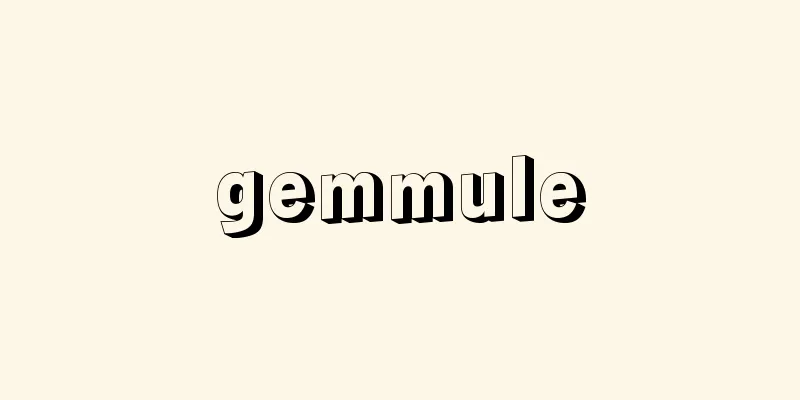Mokkei

|
Dates of birth and death unknown. A Chinese painter from the late Song and early Yuan periods (late 13th century). A Zen monk from Shu (Sichuan province), his real name was Fa Chang and his pen name was Muxi. He became the founder of Liutong Temple on the banks of West Lake in Hangzhou, and is said to have been pursued and arrested for criticizing Jia Sidao (a prime minister at the end of the Southern Song period, also known as a collector of paintings, calligraphy and antiques), but escaped to Yue (Shaoxing). Many of his works have been transmitted to Japan, and he has been a well-regarded painter in Japan since the Kamakura period, but in China, despite his friendship with famous Zen monks such as Beikan Jukan, Chizetsu Dochu, and Kido Chigu, he was partially criticized. The Yuan Dynasty's "Zue Hokan" states, "Rough and unrefined, not following ancient methods, not playing elegantly," meaning that his works are crude and do not follow ancient methods, lacking elegance and depth. Meanwhile, the Muromachi period's "Kundai Kan Sochoki" states that Muxi is "a superior artist, known as Hojo, a disciple of Bushun, with dragons, tigers, scarlet sparrows, reeds, geese, landscapes, trees, stone figures, flowers, fruits and branches," placing him in the superior category. This art form has been highly praised in Japan and has been the subject of appreciation for many generations, beginning with the Shogun Ashikaga Yoshimitsu. The distinctive feature of Mukei's art is, first of all, his expression of a rich atmosphere. This is due to the fact that he was active in the humid region of Jiangnan, and at the same time, he fully understood the effect of blurring and shading with ink painting. Secondly, he accurately grasped the subject with soft lines, and the combination of these two resulted in paintings with a high level of spirituality and an objective quality that deepened understanding of the essence. His representative work is the triptych "Kannon: Monkey and Crane" (National Treasure, Daitokuji Temple, Kyoto), which is considered one of the greatest works of Oriental painting. [Kondo Hidemi] Source: Shogakukan Encyclopedia Nipponica About Encyclopedia Nipponica Information | Legend |
|
生没年不詳。中国、宋(そう)末元(げん)初(13世紀後半)の画家。蜀(しょく)(四川(しせん)省)出身の禅僧で、法諱(ほうき)は法常、牧谿は号である。杭州西湖(こうしゅうせいこ)畔の六通寺(りくつうじ)の開山となり、賈似道(かじどう)(南宋末の宰相で、書画古器物の収蔵家としても知られている)を非難して追捕(ついぶ)を受け、越(えつ)(紹興)に難を避けたといわれる。その作品は日本に多く伝わり、わが国では鎌倉時代から評判のよい画家だが、中国では、北礀居簡(ほっかんきょかん)、癡絶道冲(ちぜつどうちゅう)、虚堂智愚(きどうちぐ)などの高名な禅僧との交友はあったものの、一部悪評を被っていた。元代の『図絵宝鑑(とかいほうかん)』には次のように載る。「麤悪無古法、諴非雅玩」、すなわち粗雑で古法を踏まず、優雅さや深みを欠くということである。一方、室町時代の『君台観左右帳記(くんだいかんそうちょうき)』には「上々、法常、号牧谿、無準(ぶしゅん)之弟子也、竜虎狷雀蘆雁山水樹石人物花果折枝」として、牧谿は上々の部に入るとしている。日本ではその芸術をきわめて高く評価し、将軍足利義満(あしかがよしみつ)をはじめとして、歴代鑑賞の対象としてきたのである。 牧谿の芸術の特色は、第一に濃厚な空気の表現を行った点にある。これは、彼が江南の湿潤な地にその活躍の場をもっていたということと同時に、水墨による滲(にじ)みぼかしの効果を十分に理解していたということである。第二は、柔らかな線による対象の的確な把握で、この二つが相まって、高い精神性と本質の理解を深める客観性のある絵画を出現させた。代表作は三幅対『観音猿鶴(かんのんえんかく)図』(国宝、京都・大徳寺)で、東洋画最高作品の一つに数えられる。 [近藤秀実] 出典 小学館 日本大百科全書(ニッポニカ)日本大百科全書(ニッポニカ)について 情報 | 凡例 |
Recommend
Philosophical Transactions
…Scientific journals appeared during the scientif...
Noble Gases - Kiggas
This is the new name for "rare gases," a...
Midway Airport
...It is located 37 km northwest of the city, and...
Old Country Man Tadajii - Just an Old Man
?-? A comic writer in the mid-Edo period. He is s...
Temporary Tower - Kariyagura
〘Noun〙 = Kaeyagura (Substitute Tower) Source: The ...
Kuhn Loeb Group
In 1867, German Jews S. Kuhn and A. Loeb founded K...
Wood Turpentine
...The product obtained by dry distillation is di...
Eileithyia (English spelling)
A goddess in Greek mythology. Daughter of Zeus and...
minority problems
In this case, the subordinate group is an ethnic ...
Index fossils
Fossils are useful for specifically learning abou...
Ki - Ki
〘 noun 〙 [1] A natural phenomenon that changes or ...
NWSA - NWSA
… After the Civil War, Stanton and SB Anthony lea...
Social life statistics indicators
In recent years, the economy and the environment s...
Ersan, R.
...Therefore, after the war, it was able to be re...
Sponge - Sponge
A general term for the lowest class of multicellul...









